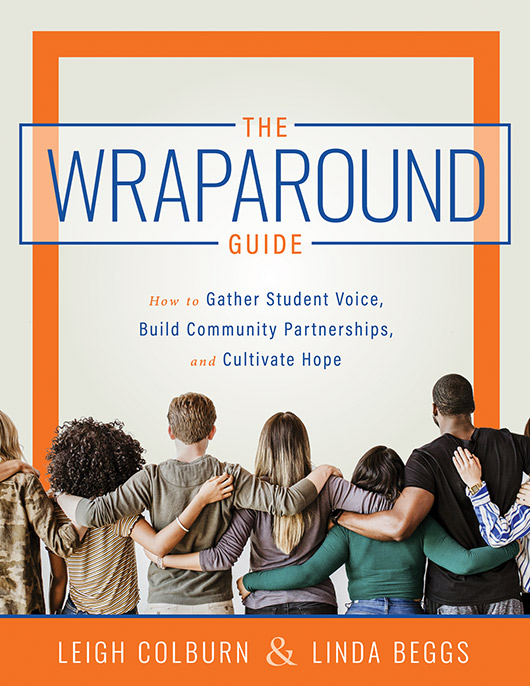Free Reproducibles
The Wraparound Guide
Your school has the power to help students overcome barriers to well-being and academic achievement—from mental health issues to substance abuse to trauma. With this timely guide, you will learn how to launch and sustain high-quality wraparound services embedded within your school that meet the needs of every learner. Use the book’s actionable steps to amplify student voice, establish community partnerships, and design programming that fully supports the whole child.
Benefits
- Recognize the impact of outside influences on students and how they affect their classroom learning.
- Design processes to hear student voices and identify their needs.
- Forge relationships with students and establish community partnerships.
- Design and fund services and programs that meet student needs.
- Connect students and families with the support they need to enable learning, wellness, and healthy relationships.
Table of Contents
Part I: Laying the Foundation
Chapter 1: Understand Core Concepts
Part II: Gathering Student Voice
Chapter 2: Identify Needs
Chapter 3: Establish Priorities
Part III: Building Your Infrastructure
Chapter 4: Identify Resources
Chapter 5: Establish Partnerships
Chapter 6: Secure Funding
Chapter 7: Create Your Structure
Part IV: Launching and Sustaining Wraparound Services
Chapter 8: Connect Students and Families With Services
Chapter 9: Sustain Wraparound Programming
Epilogue
Appendix: Pull It All Together
STUDY GUIDE
REPRODUCIBLES
Chapter 1
Chapter 2
- Figure 2.8: Off-Track Interview Guide and Facilitator Notes Page
- Figure 2.10: Graduation Story Template
Chapter 3
- Figure 3.3: Guide to Review Results of the Student Voice Needs Survey
- Student Voice Needs Survey—High School
- Personal Reflection Notes Template
- Sample Compilation of Student Voice on Anger
Chapter 4
Chapter 5
- Figure 5.1: Partnership Planning Guide
- Figure 5.2: Memorandum of Understanding (MOU) Discussion Guide
- Figure 5.3: Community Strategic-Planning Meeting Guide
- Figure 5.5: Wraparound Mission Questionnaire
- Figure 5.6: Commitment Card
Chapter 6
Chapter 8
SUGGESTED RESOURCES
Books
- Barr, R. D., & Gibson, E. L. (2013). Building a Culture of Hope: Enriching Schools With Optimism and Opportunity. Bloomington, IN: Solution Tree Press.
- Barr, R. D., & Gibson, E. L. (2020). Building the Resilient School: Overcoming the Effects of Poverty With a Culture of Hope. Bloomington, IN: Solution Tree Press.
- Brendtro, L. K., Brokenleg, M., & Van Bockern, S. (2019). Reclaiming Youth at Risk: Futures of Promise (3rd ed.). Bloomington, IN: Solution Tree Press.
- Conzemius, A. E., & O’Neill, J. (2014). The Handbook for SMART School Teams: Revitalizing Best Practices for Collaboration (2nd ed.). Bloomington, IN: Solution Tree Press.
- DuFour, R., Dufour, R., Eaker, R., Many, T. W., & Mattos, M. (2016). Learning by Doing: A Handbook for Professional Learning Communities at Work (3rd ed.). Bloomington, IN: Solution Tree Press.
- Jensen, E. (2019). Poor Students, Rich Teaching: Seven High-Impact Mindsets for Students From Poverty (Rev. ed.). Bloomington, IN: Solution Tree Press.
- Parker, D. (2019). Building Bridges: Engaging Students at Risk Through the Power of Relationships. Bloomington, IN: Solution Tree Press.
Websites
- Bright Futures USA
- The Centergy Project
- The Centergy Project, “Resources”
- Cobb County Government, “Cobb Overdose Prevention Effort”
- Davis Direction Foundation
- One Need
- Payanywhere
- Purposity
- Resilience Circles
- Sources of Strength
- Square
- United Way of Hall County, “Community Game Plan”
- Word Art
- YouScience

